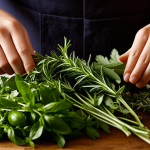Essential Ingredients for a Traditional Scotch Egg
Crafting a truly authentic Scotch egg flavor depends heavily on selecting the right classic Scotch egg components. Central to this is the choice of high-quality sausage meat, which provides the savory, spiced coating around the egg. Traditional Scottish recipes favor pork sausage meat seasoned simply with salt, pepper, and a hint of nutmeg. Some variations use a mix of pork and veal or add herbs like sage for nuanced taste. For those seeking substitutes, chicken or turkey sausage meat can work, though they slightly alter the flavor profile.
Next, the egg preparation is crucial. Achieving the perfect yolk—whether soft or hard—is a vital consideration. Soft yolks require precise boiling times, typically around 5 to 6 minutes, to ensure they are creamy but not runny, whereas hard yolks take about 8 to 9 minutes. Cooling the eggs rapidly afterward prevents overcooking and helps in easy peeling, which affects the final presentation.
Also to see : How can you incorporate British herbs into everyday meals?
Finally, selecting the right breadcrumbs influences both texture and taste. Traditional Scotch egg recipes use fresh, fine breadcrumbs for a delicate crunch, but panko breadcrumbs offer a lighter, airier crust. The breadcrumb choice directly impacts the mouthfeel and complements the rich sausage and egg, completing the traditional Scotch egg ingredients trifecta.
Step-by-Step Method to Replicate Authentic Flavor
Replicating Scotch egg flavor with precision begins by seasoning the classic sausage meat carefully. Enhance the depth of flavor by mixing salt, pepper, and a subtle pinch of nutmeg directly into the sausage meat. This ensures the traditional Scotch egg ingredients fully imbibe the authentic taste. Avoid over-seasoning, as the sausage’s natural savouriness should remain dominant.
In the same genre : How can you make a rich and creamy cauliflower cheese?
The egg coating technique is crucial for the right texture and a perfect seal. After boiling and peeling eggs, wrap each one evenly in the seasoned sausage meat, pressing gently but firmly to eliminate gaps. This tight seal prevents the meat from separating during cooking and keeps the yolk intact, whether aiming for a soft or hard center.
For cooking, frying is traditional, offering a golden, crispy crust that enhances the authentic Scotch egg flavor. Use medium heat and shallow oil to cook evenly without burning. Alternatively, baking can reduce oil usage but requires careful monitoring to achieve the same crunch.
Following these Scotch egg cooking instructions precisely allows for a balance of crunchy exterior and moist, flavorful interior — key to replicating this classic British favorite flawlessly.
Flavor-Enhancing Tips and Techniques
Elevating the traditional Scotch egg ingredients begins with precise seasoning. Incorporate classic spices like nutmeg, black pepper, and a touch of sage into the sausage meat to boost the authentic flavor. This blend accentuates the natural richness of the meat without overpowering the delicate egg inside. For variety, add subtle herb notes such as thyme or rosemary, which harmonize beautifully with the classic Scotch egg components.
Experimenting with different breadcrumb types also impacts texture and taste. While fresh breadcrumbs create a fine crunch, panko breadcrumbs offer a lighter, airier crust that enhances the eating experience. Mixing in toasted breadcrumbs can add a nutty undertone that complements the savory sausage and egg.
Maintaining moisture during cooking is essential. Wrapping eggs tightly in the sausage meat and sealing edges properly helps retain juiciness, preventing dryness. Some cooks suggest briefly brushing the outer layer with beaten egg before coating with breadcrumbs to improve adhesion and achieve a crisper crust. These Scotch egg flavor tips ensure a balanced, flavorful result that honors the authentic Scotch egg flavor tradition.
Understanding What Sets Traditional Scotch Eggs Apart
Traditional Scotch egg ingredients create a distinct authentic Scotch egg taste that sets them apart from modern variations. At the heart lies the use of classic pork sausage meat, unadorned with excessive spices, which forms a flavorful yet simple coating around the egg. This contrasts with contemporary adaptations that may incorporate exotic seasonings or different proteins, altering the classic British recipe’s signature balance.
One key difference between traditional vs modern Scotch eggs is the texture and flavor of the breadcrumb layer. Traditional recipes emphasize a fine, fresh breadcrumb crust delivering a delicate crunch, while alternatives often use panko or spiced coatings, introducing lighter or bolder textures and tastes. These subtle changes influence the overall eating experience and sometimes compromise the original robust flavor.
Common alternative ingredients include game meats or vegetarian substitutes. While these broaden the dish’s appeal, they inevitably shift away from the distinctive profile achieved by the classic Scotch egg components. Preserving authenticity means respecting these core ingredients and cooking techniques that enhance the egg’s centered richness and the sausage’s savory depth.
Understanding these differences helps honors the heritage of this classic British dish, giving insight into how even small tweaks can impact the integrity and enjoyment of the authentic Scotch egg flavor.





